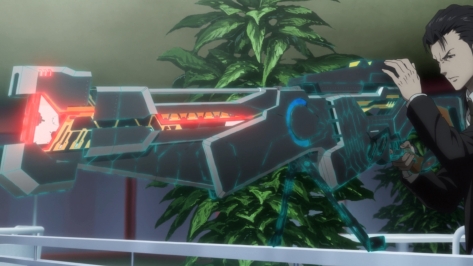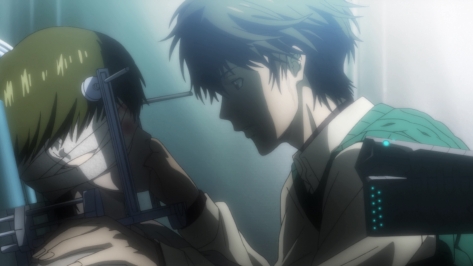Japanese Title: Metropolis
Similar: Akira
Steamboy
Casshern Sins
Watched in: Japanese & English
Genre: Adventure Drama Science Fiction Romance
Length: 1 hr. 49 min. movie
Positives:
- Some truly magnificent art.
- City design.
Negatives:
- Character motivations and personalities aren’t interesting.
- Art over story.
- Plodding pace.
(Request an anime for review here.)
Metropolis adapts the 1949 manga of the same name from the creator of Astro Boy (hence the character designs), Osamu Tezuka, who based this story on a single image of the famous 1927 Metropolis silent film. As such, despite sharing a name and setting, the two versions have little in common.
The city of Metropolis rose to greatness thanks to leaps and bounds in technological advancements. Robots have replaced much of the manual labour and menial tasks. However, what should have been a utopia of man and machine, has turned into a class war. Robots are second-class citizens, attacked and destroyed by rioters on a daily basis. They cannot venture beyond their designated zones. Japanese detective Shunsaku and his nephew Kenichi arrive in town on the trail of an organ trafficking case, but the master of Metropolis, Duke Red, has plans involving a robot girl of his creation that throws them off track.
Metropolis draws you in with its city design. Life bustles and clanks along on every corner and in every alley, creating a sense of wonder and a desire to see more. But a film is about story, and it’s not long before you start to ask where this elusive feature has gone. Every character moves in every scene – it never stops to sit down and show us motion within characters. More scenes go towards showing us the world and all the fancy art techniques used than towards developing characters. Art came over story.
The plodding pace of the first act is manageable thanks to the world, though once in the second act and the pace is still like gears grinding together, it becomes difficult to pay attention. The heroes are your standard good guys, which is obviously not ideal, yet I believe the true problem lies with the antagonists. The Duke is your typical Big Boss Villain atop the Tower, residing in the background for the most part (why does he look like a cockatoo?). The other is his adopted son, Rock. He goes after the robot girl, intent on destroying her out of jealousy. The Duke lost his daughter and would rather create an artificial replacement over accepting Rock. His daddy issues aren’t interesting because they lack a foundation to make us care or see them as a problem. We have a few brief interactions between father and son that serve to advance plot, not deepen character. One could say the same for much of the cast. They are tools to the story, nothing more.
The third act finally gets it together to give us action atop the highest skyscraper, which makes for a spectacular and tense set piece. Emotion and character enter the spotlight as the truth behind the robot girl comes out. The Duke reached for the sun in his beloved city and it went beyond his control. He constructed his tower too high and it fell so far. You may notice this as an adaptation of the Tower of Babel, and you’d be right – Metropolis outright states this. Some subtlety would be nice.
I love art as much as anyone does, but story is more important. Metropolis has plenty of the former and mere morsels of the latter.
Art – Very High
Tezuka’s Astro Boy character art of Popeye biceps and effeminate curls on everyone has never looked good to me. It doesn’t hold up, nor does the once spectacular CG for several scenes. I was going to give the art a High rating, until the finale blew me away. It’s magnificent.
Sound – Medium
The acting is fine in either language, while the music is serviceable. The finale song is the only standout.
Story – Low
A detective and his nephew become involved in the plight of a robot girl amidst a technologically advanced city. Metropolis put nine out of ten energy cells into the art, leaving a blinking check engine light for the characters and plot.
Overall Quality – Medium
Recommendation: For art fans. Metropolis is an engaging time if great art alone can sustain your enjoyment.
(Request reviews here. Find out more about the rating system here.)
Awards: (hover over each award to see descriptions; click award for more recipients)
Positive:
Negative:















































